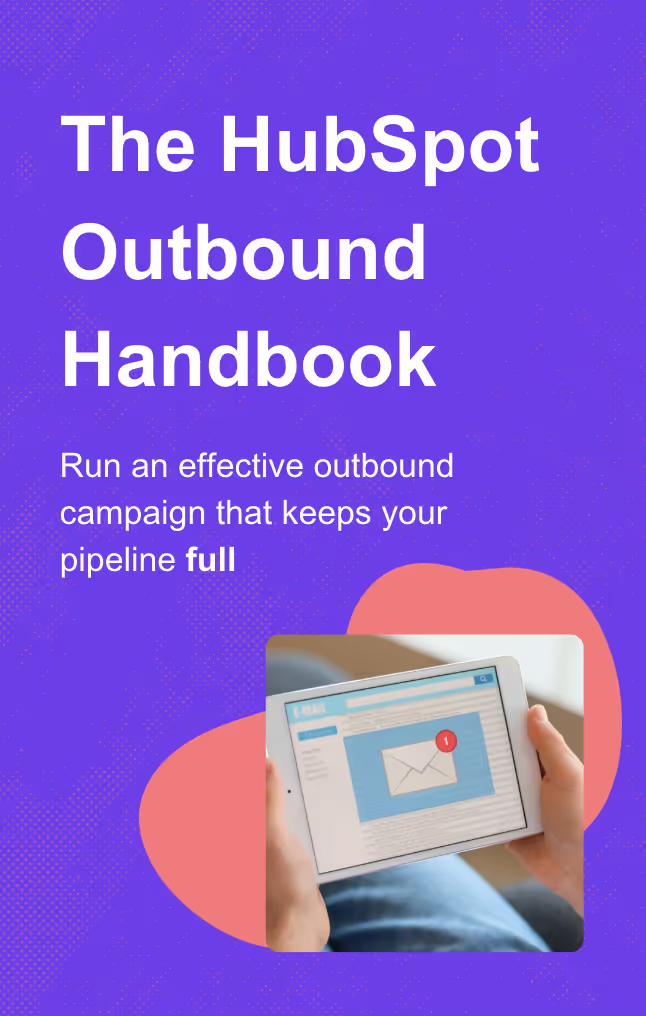Mastering HubSpot Sales Funnel Stages: Examples & Best Practices
Understanding HubSpot sales funnel stages is vital for effectively tracking and nurturing leads from initial contact to closing a deal.
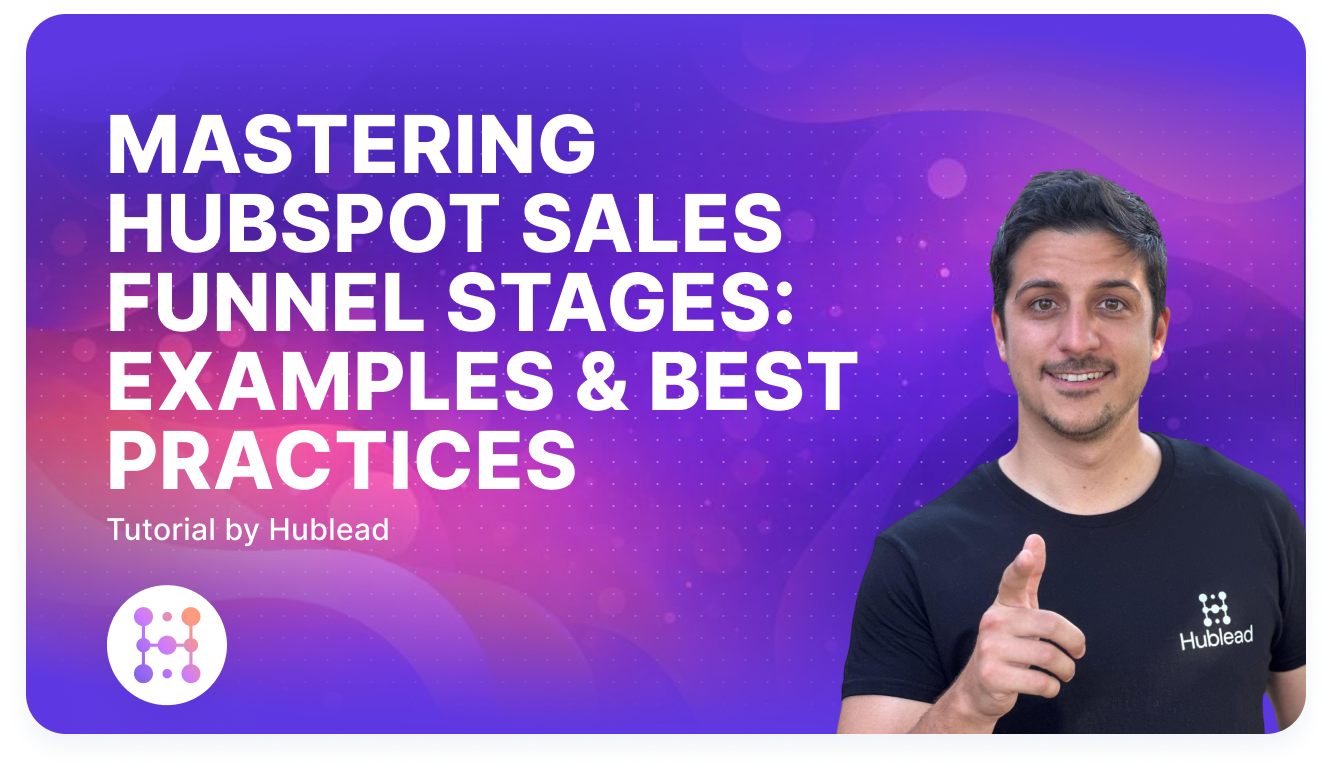
What’s the key to success in sales?
Is it being charismatic? Having a perfectly personalized pitch? Closing your eyes and pressing “send” as much as humanly possible?
Sales, at the end of the day, is a numbers game: the reps who dial the most close the most. But you can tip the numbers in your favor with an effective and optimized sales process. And where does a good process start? Good funnel management.
If your team uses HubSpot, then you have built-in functionality to track every lead from awareness to closed-won. In this article, we’ll show you how to navigate HubSpot’s sales funnel to boost conversions, close deals faster, and strengthen customer relationships.
Key Takeaways
Short on time? Here’s the tldr:
- The HubSpot sales funnel reflects today's complex buyer journey and needs constant optimization.
- Customizing deal stages in HubSpot CRM is key to tracking leads and forecasting revenue.
- Regular analysis with HubSpot tools refines strategies, boosting customer value and close rates.
Got 10 more minutes? Keep reading and follow along in your HubSpot portal with our examples.
What is a Sales Funnel?
A sales funnel is a visualization of the journey prospects take before becoming customers. It encompasses every interaction from their first touchpoint with your brand to the closing of a deal.
Each stage in the funnel is vital in guiding leads through the process, helping sales teams understand where prospects are and what they need to advance to the next stage.
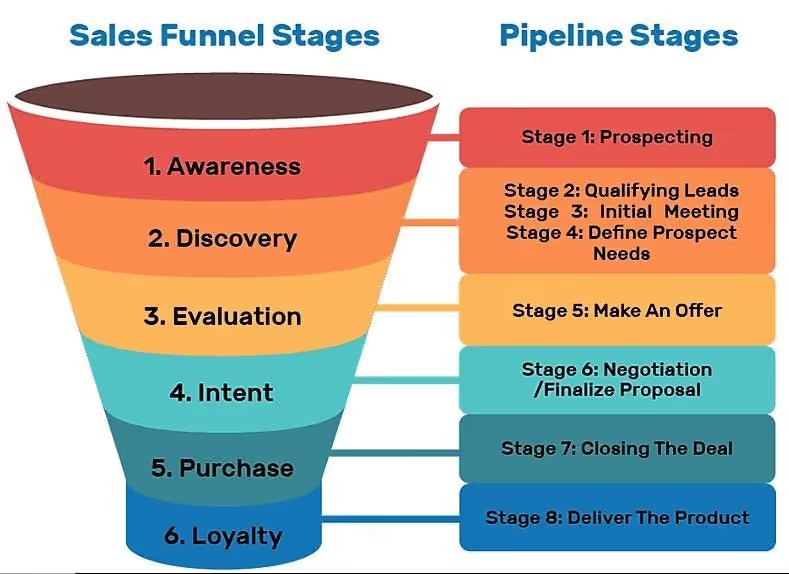
You’re probably familiar with this concept, but you might not realize that in HubSpot, these stages are customizable to fit your business model.
HubSpot comes with built-in funnel stages to get you started, which mirror the customer journey:
- Awareness
- Consideration
- Decision
Read on as we break these down in detail and show you how to use them in your sales process.
Decoding HubSpot Sales Funnel Stages: Step by Step With Examples
Sales is anything but simple.
The buyer’s journey continues to evolve from a straight path to a complex, winding process filled with twists and turns. The internet, social media, and now AI all represent quantum leaps in how sales and marketing need to evolve. With each new evolution, customers have more control and often research extensively before engaging with sales teams.
You can still succeed, though!
It’s just a matter of optimization and paying attention to what works. That starts with paying attention to the buyer’s journey we mentioned earlier:
- Awareness
- Consideration
- Decision
These three stages can be utilized in HubSpot to track prospects as they progress through your sales funnel and help you assess the effectiveness of your sales process.
Awareness: Capture New Leads
The Awareness stage is the first step in your sales funnel.
This represents the time when your leads first encounter your brand. Often, we call these leads “problem-aware, but not solution-aware,” meaning they know they have a problem but might not be actively looking for a solution. At this point, they probably don’t know of your brand, but with the right nurturing, you can build a bridge from their problem to your product/service as the solution.
In HubSpot, this typically corresponds to capturing subscribers (contacts who have shown initial interest, such as by subscribing to your blog) or signing up for a newsletter. These contacts aren’t sales-ready yet. Depending on your industry and sales cycles, it may be a while before they are ready for direct, targeted outreach.
That said, it’s helpful to track these contacts and pay attention to the ones that show interest in your brand. For example, which of these contacts visit your pricing page, download multiple lead magnets, or frequently open newsletters? These activities signal engagement and interest, which can be used for targeted and timely outreach.
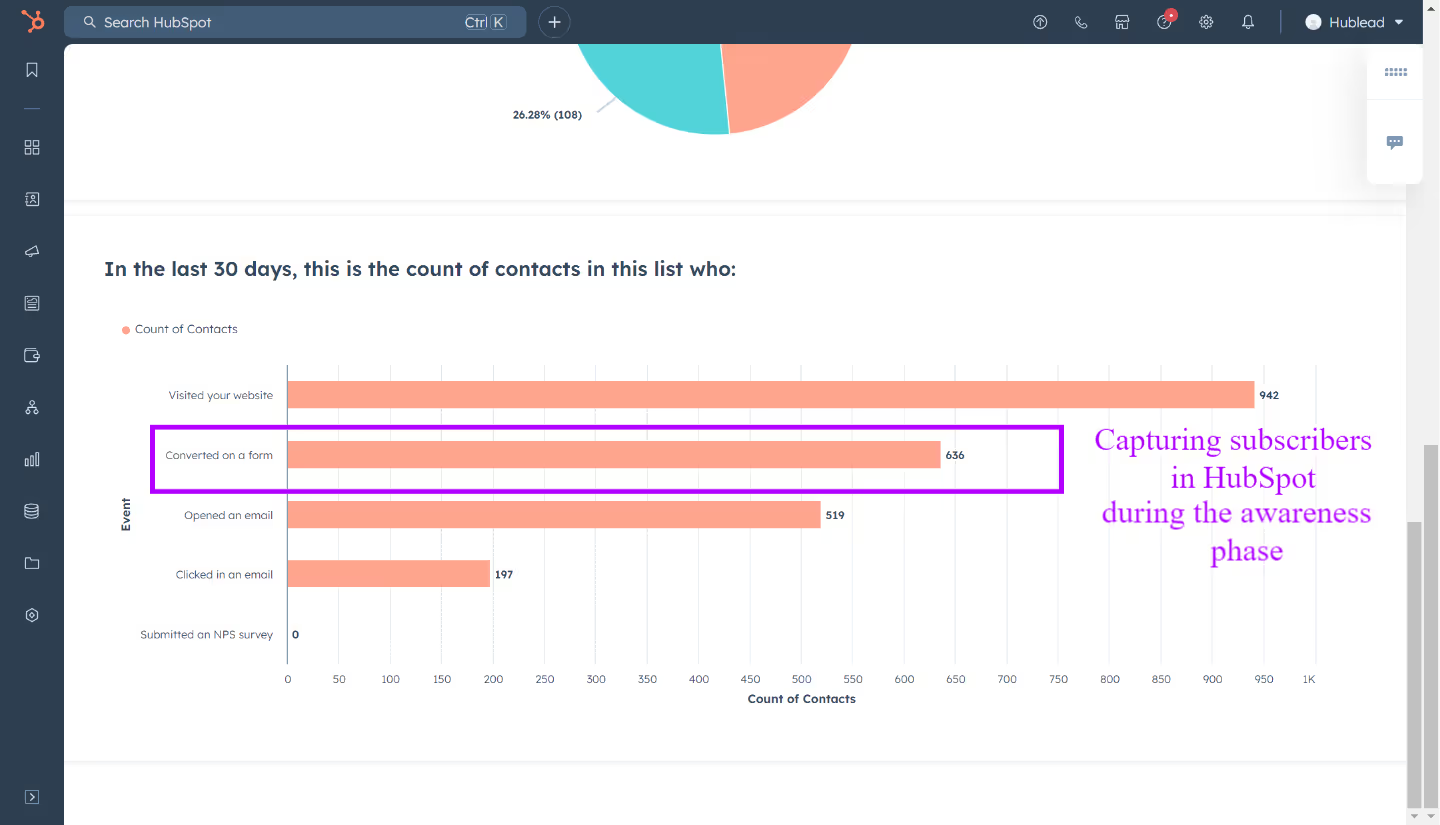
Based on my experience, here’s what I recommend for the Awareness Stage:
- Drive contacts into this funnel stage with inbound marketing strategies like content marketing, SEO, and social media to capture interest.
- Provide educational materials like blogs, ebooks, and guides to position yourself as a thought leader. This builds familiarity with your prospects and trust in your brand,
- Use lead magnets such as free tools, trials, or quizzes to gather contact information.
These contacts may not be sales-ready yet, but with time and nurturing, they could be prime targets for your team. I’ll show you how to do that in HubSpot next.
Consideration: Nurturing Leads for Sales
Once new contacts have become aware of their options, they shift from Awareness to Consideration.
These are leads who are actively researching and comparing solutions and are prime candidates for personalized nurturing to warm them up for your outreach.
Leads in this stage are typically classified as Marketing Qualified Leads (MQLs). They’ll take certain buying actions like reviewing pricing, reading case studies, or testing out a sandbox account. These consideration actions will vary depending on your business, so this is where lead scoring becomes essential to ensure the right prospects move forward.
HubSpot’s built-in lead scoring feature can help you prioritize leads based on their engagement with your content. This will provide you with a hyper-targeted list of prospects who are actively engaging with your brand and are more likely to be receptive to your outreach.
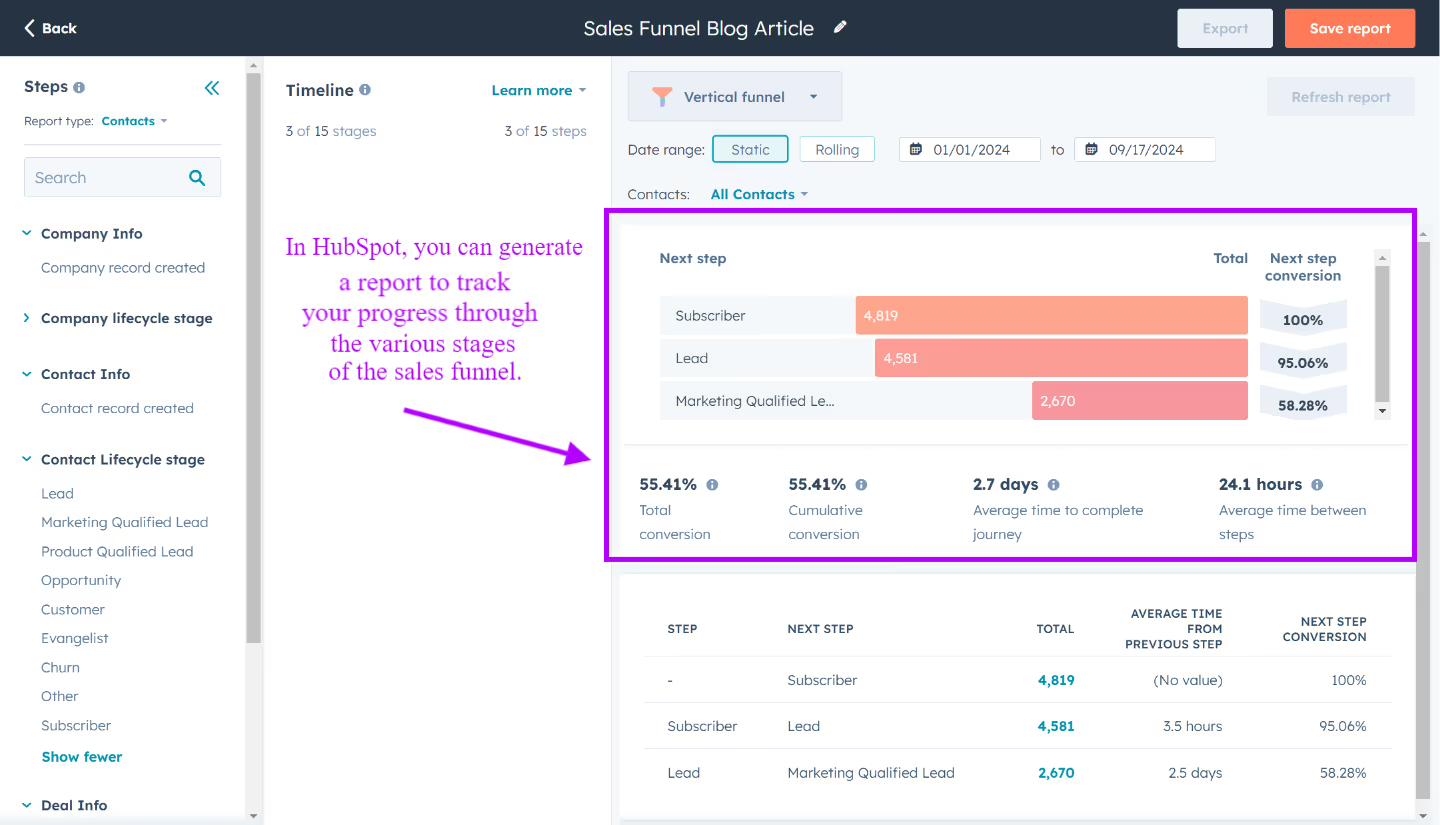
From my experience, here’s what works best in the Consideration Stage:
- Use email marketing campaigns to nurture leads with targeted content.
- Offer webinars, case studies, and in-depth product comparisons.
- Implement HubSpot’s predictive lead scoring to automate lead qualification and focus on high-potential leads.
Your goal here isn’t to sell as much as it is to identify hand raisers for the next step: closing.
Decision: Converting Prospects Into Customers
It’s time for every sales rep’s favorite stage: the Decision stage.
This is where leads are ready to engage directly with your sales team. These leads have explored their options and are evaluating whether your product or service is the right fit.
HubSpot tracks this stage using Sales Qualified Leads (SQLs) and Opportunities, which are leads that have interacted with your sales team and shown serious intent to purchase.
At this point, it’s critical to ensure your sales reps are equipped to handle objections, close deals, and convert leads into customers.
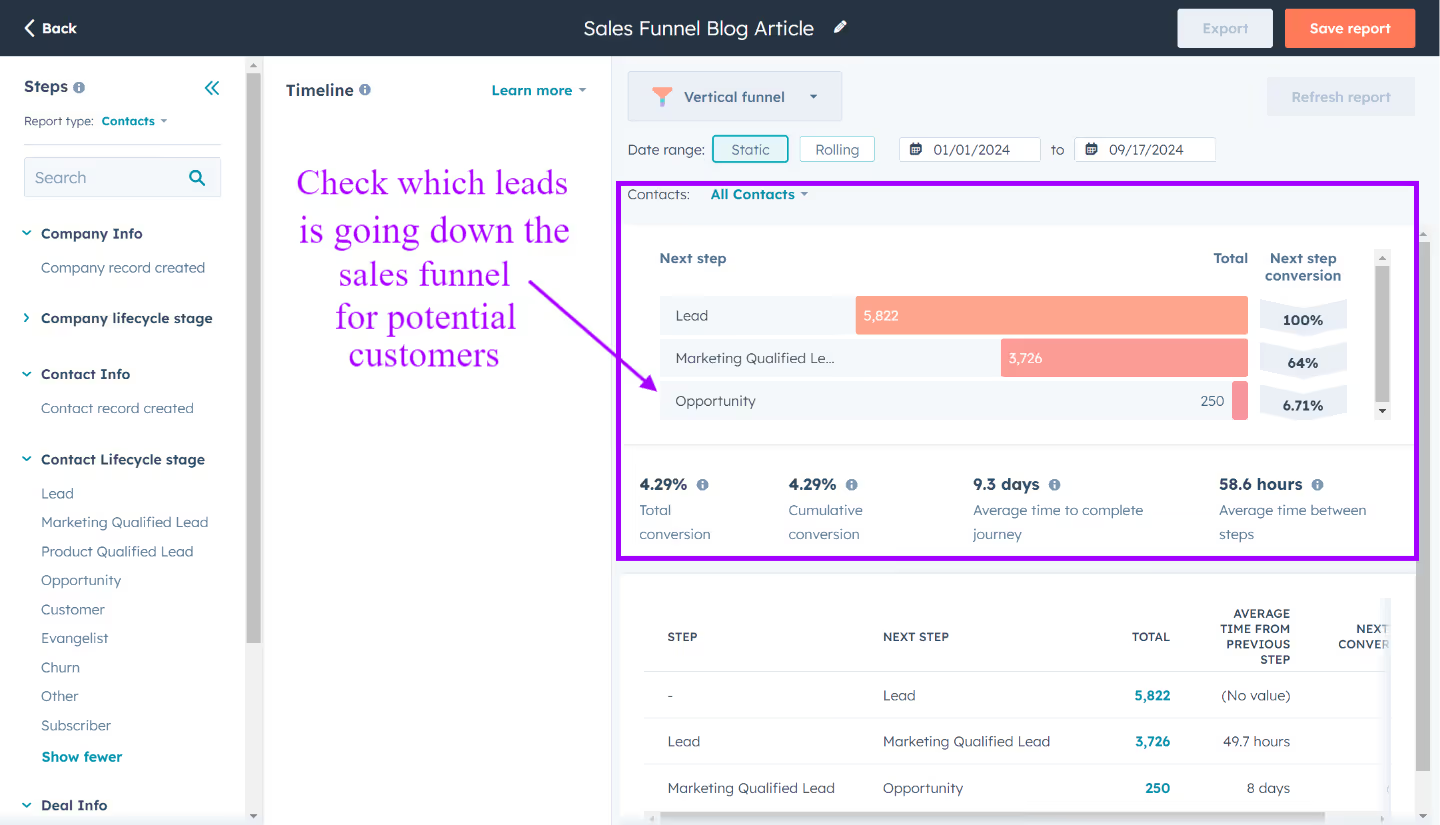
The Decision stage is where the magic happens for your sales team. From my experience, this is where you really need to focus on making things as easy as possible for your leads. Here’s what’s worked for me:
- Schedule personalized demos to address concerns and share clear pricing.
- Equip your team with HubSpot CRM tools to keep everything organized.
- Use automated workflows for timely follow-ups and reminders—this really helps close deals.
Now you know what these different funnel stages are in HubSpot and how to use them. Read on for tips to optimize and refine your sales funnel as time goes on.
How to Optimize HubSpot’s Sales Funnel for Your Team
It’s one thing to know what the different funnel stages in HubSpot are, but your team’s success will hinge on being able to optimize and refine your sales funnel as time goes on.
To do that, you’ll need to customize each step of your sales funnel and track it closely to identify and address bottlenecks and drop-offs as you progress. Here’s how to get the most out of each part of your sales funnel.
- Map out your deal pipeline and stages
- Track deal progression
- Identify and fix bottlenecks
Understanding Deal Pipelines and Deal Stages
The first step in mastering HubSpot’s sales funnel is to customize your deal pipelines.
Deal pipelines help you visualize your sales process, predict revenue, and identify any roadblocks that may slow down progress.
Remember the three phases of the funnel that we talked about earlier? Think of HubSpot deal stages as the key steps that demonstrate the progress of leads from a cold prospect to a red-hot opportunity.
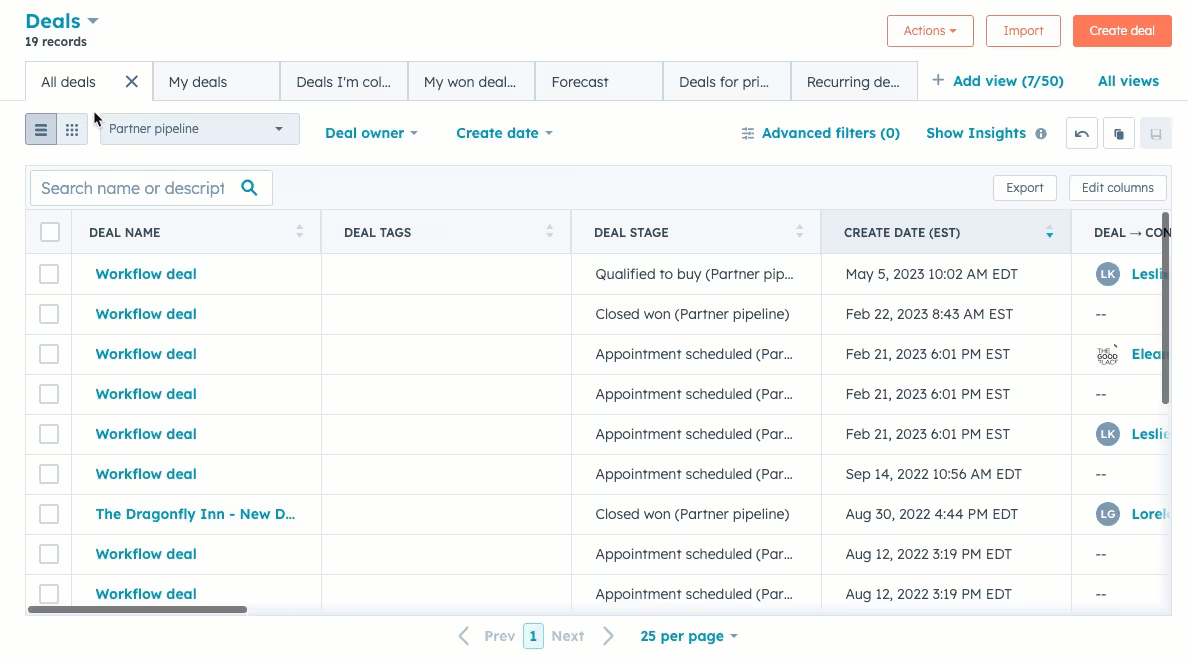
HubSpot offers seven default deal stages, each with an assigned deal probability that indicates the likelihood of closing:
- Appointment scheduled
- Qualified to buy
- Presentation scheduled
- Decision-maker bought in
- Contract sent
- Closed won
- Closed lost
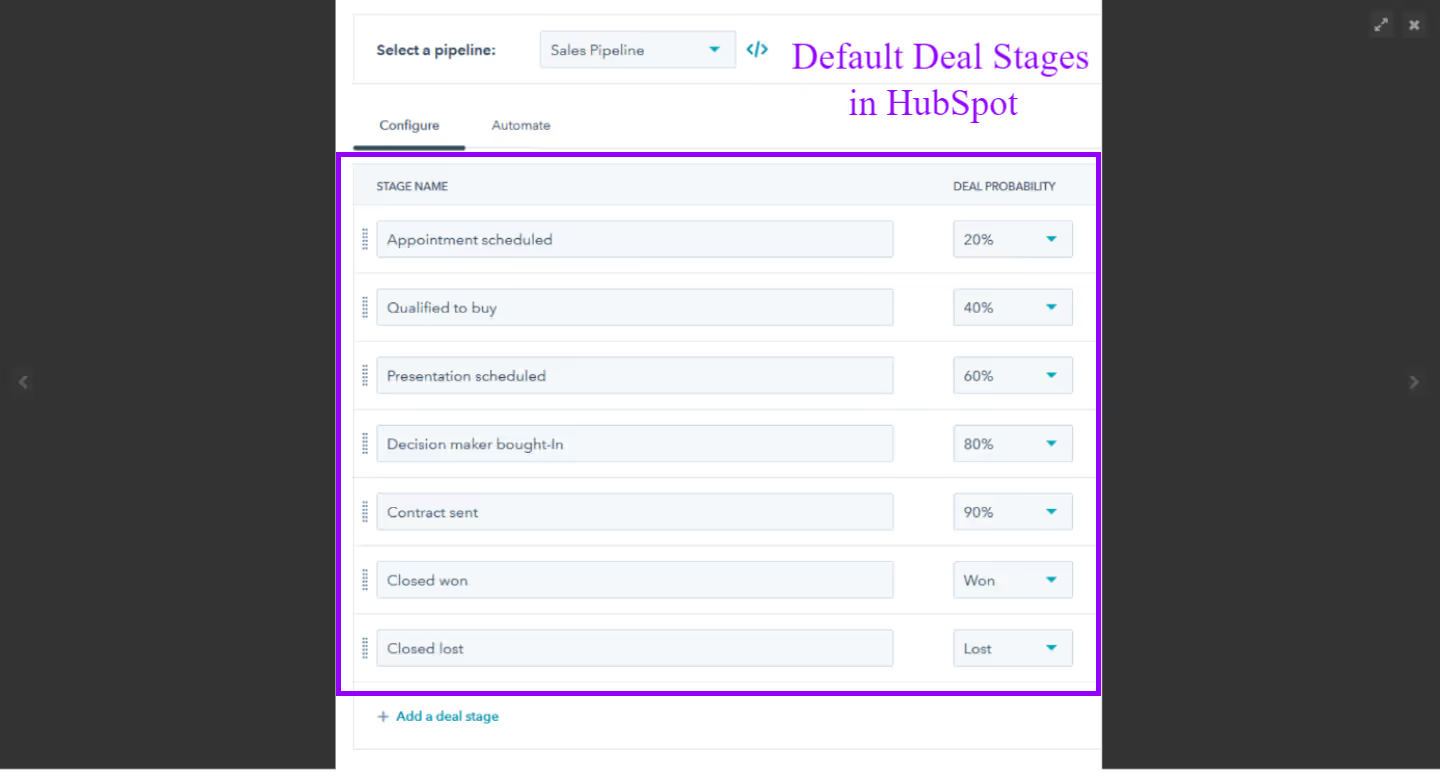
While these default stages work for many businesses, companies with more complex sales processes may need to adjust or add deal stages to fit their unique needs. You can also personalize each stage’s probability to improve the accuracy of your revenue forecasting.
For even more flexibility, HubSpot Sales Hub Professional or Enterprise users can create up to 50 distinct pipelines, allowing for customization tailored to various products, services, or customer segments.
Tracking and Managing Deal Progression
You can’t just set up a deal board and call it a day. Winning sales teams know that’s just the first step; this is where the real work begins!
Once your deal pipelines are set up, the next step is to track how leads progress through the funnel. HubSpot’s CRM provides tools to monitor deal movement, making it easier to identify bottlenecks or slow-moving deals.

Some key tools in HubSpot to track deal progression:
- Deal Movement Reports: These reports provide insights into how long leads remain at each stage, enabling sales managers to pinpoint areas that require attention.
- Deal Change History: This feature enables you to review the progress of each deal’s history, allowing you to track changes and refine your strategy based on historical data.
By leveraging HubSpot’s built-in deal progression tools, you can ensure that your sales process is efficient, organized, and optimized for success.
Identifying Bottlenecks and Optimizing Lead Progression
You could get pretty far with those two steps. But you’ll inevitably slow down and have no idea why if you aren’t relentlessly tracking and optimizing your sales funnel.
Fortunately, HubSpot makes it easy to trace lead progression and identify bottlenecks in your sales funnel. Whether it’s…
- Leads stall at the “qualified to buy” stage, indicating that your team needs additional resources and more effective follow-up tactics.
- You’re churning through a high number of prospects at the presentation stage, signalling your team’s demo and presentation skills need work.
- Reps often find themselves with hours of free time every day while their calendars remain empty, signaling a lack of leads from marketing or a lack of proactive outreach from your team.
Whatever it is, HubSpot can help you spot and fix it. To identify and address bottlenecks in HubSpot, I recommend doing the following:
- Analyze Lead Quality: Ensure your team focuses on qualified leads and prioritizes target accounts.
- Adjust Stage Probabilities: Ensure the probability of closing is accurate at each deal stage.
- Improve Follow-Up: Automate workflows and create sequences to ensure timely follow-up and engagement with leads.
I’ve got a few more tips for you to really level up your sales process in HubSpot, so keep reading for more!
How to Automate Your Sales Funnel for Maximum Efficiency
HubSpot’s automation tools are like rocket fuel for a properly set-up sales process.
HubSpot’s CRM offers a variety of automation tools, such as workflows that automatically move deals through the pipeline based on lead activity. For example, with HubSpot’s automation, you can…
- Advance a deal to the next stage based on contact activity
- Add contacts and companies to your CRM based on website visits and activity
- Configure tasks based on deal actions
And that’s just scratching the surface. At a minimum, I recommend setting up the following automated features in HubSpot to help run your sales process:
- Lead Scoring: Use predictive lead scoring to prioritize high-potential leads automatically. HubSpot’s scoring system ranks leads based on behaviors and demographic factors, helping your sales team focus on the leads most likely to convert.
- Task Automation: Set up workflows that automate routine tasks, such as scheduling follow-ups, sending emails, or assigning leads to the right sales reps.
If you're curious and want to dive deeper into workflows, we have another article on 10 Workflow Examples You Can Implement for Your Sales Team. It’s packed with practical ideas to streamline your process and turn a CRM full of leads into a full pipeline (and a happy sales team).
How to Fuel Your Sales Process With Data and Insights
There’s a key theme running through this article: optimize your sales process.
The best sales teams know how to use data and insights to identify blockers and double down on what works. Fortunately, HubSpot makes it a snap to find those insights in your CRM.
HubSpot’s analytics and reporting tools are integral for refining your sales funnel. These reports provide a bird’s-eye view of your entire pipeline, highlighting which stages are performing well and which need improvement.
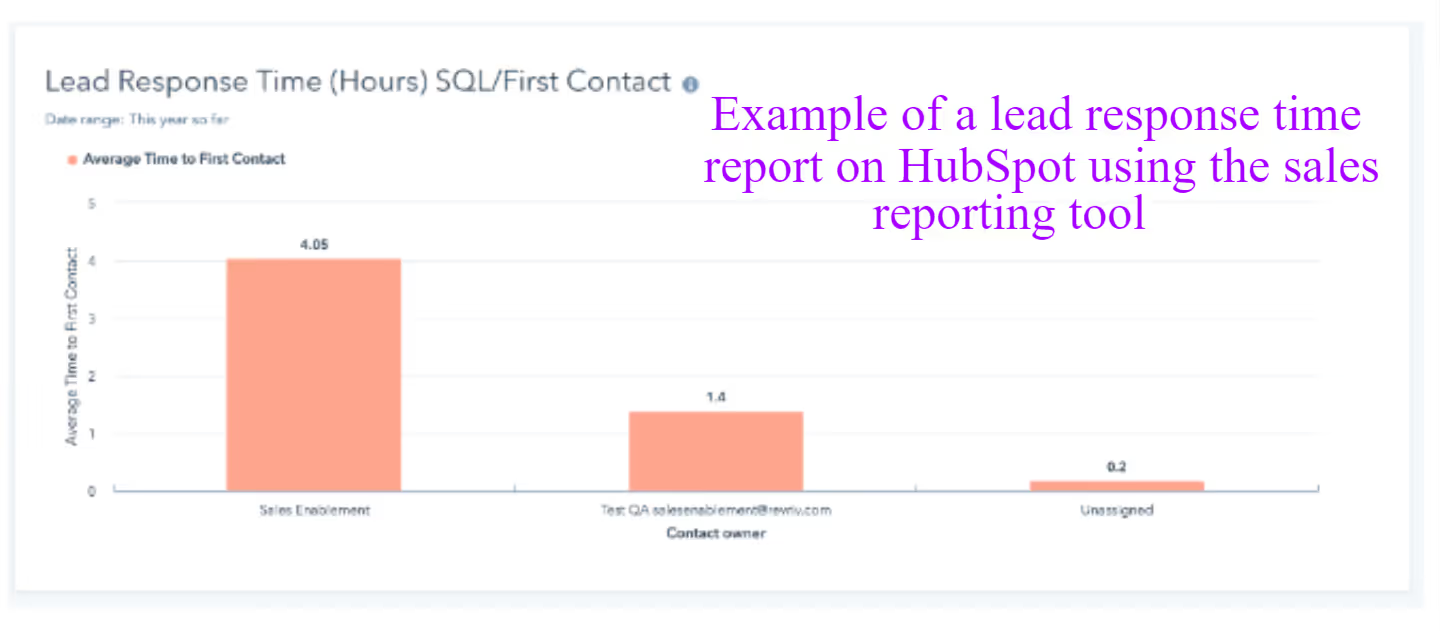
My favorite sales metrics to track in HubSpot are:
- Conversion Rates: Analyze the percentage of leads that successfully progress from one stage to the next.
- Lead Response Times: Measure how long it takes your team to follow up with leads at various stages
- Revenue Forecasting: Utilize deal stage probabilities to predict future revenue more accurately.
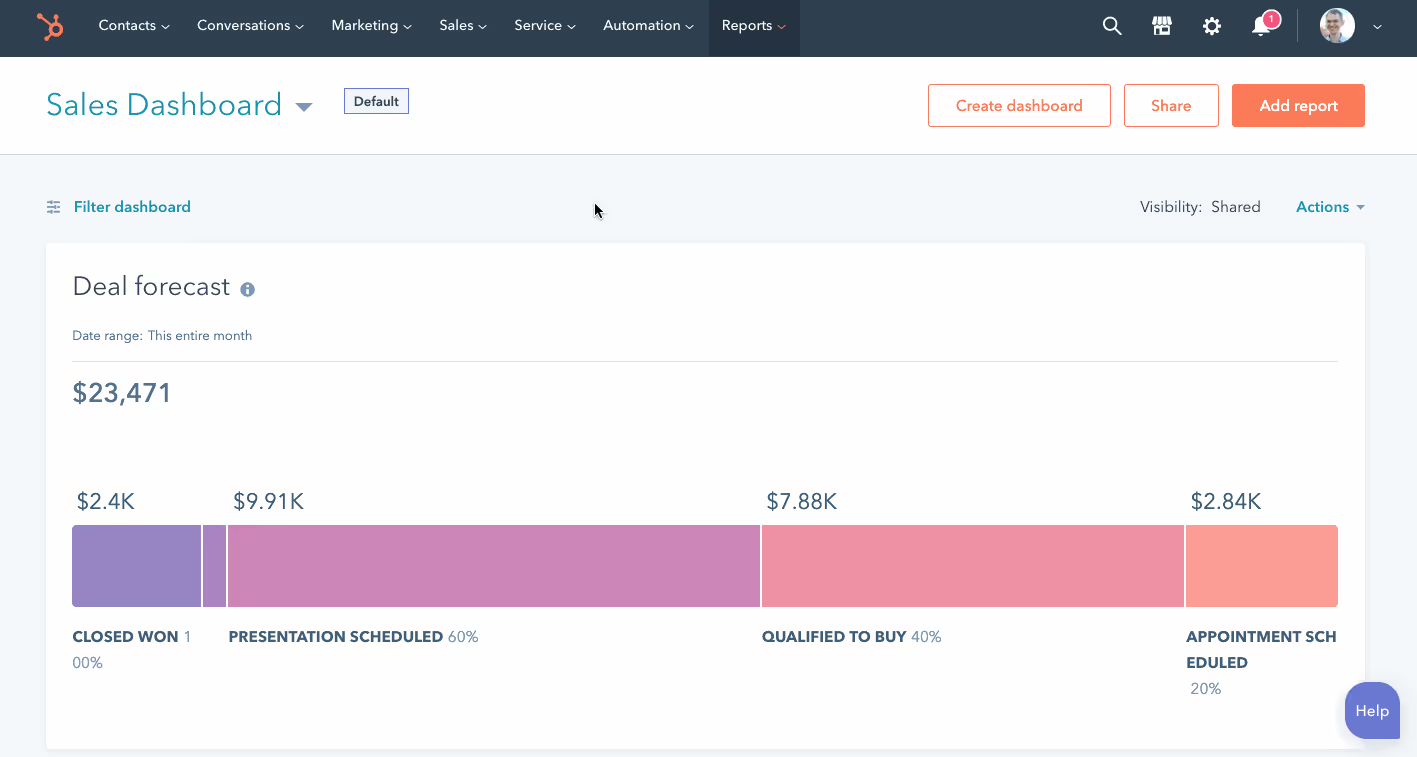
By continuously reviewing these metrics, you can ensure that your sales funnel remains optimized and that your team is focusing on the right leads at the right time.
How to Enhance Customer Lifetime Value (CLV) Through Post-Sale Strategies
Think sales is just about what happens before the contract is signed?
The ultimate goal for any effective sales funnel is not just to close deals – it’s to foster lasting relationships that enhance Customer Lifetime Value (CLV).
Fortunately, HubSpot can help you here, too! HubSpot CRM allows businesses to stay engaged with customers post-sale, offering opportunities for cross-sells, upsells, and renewals.
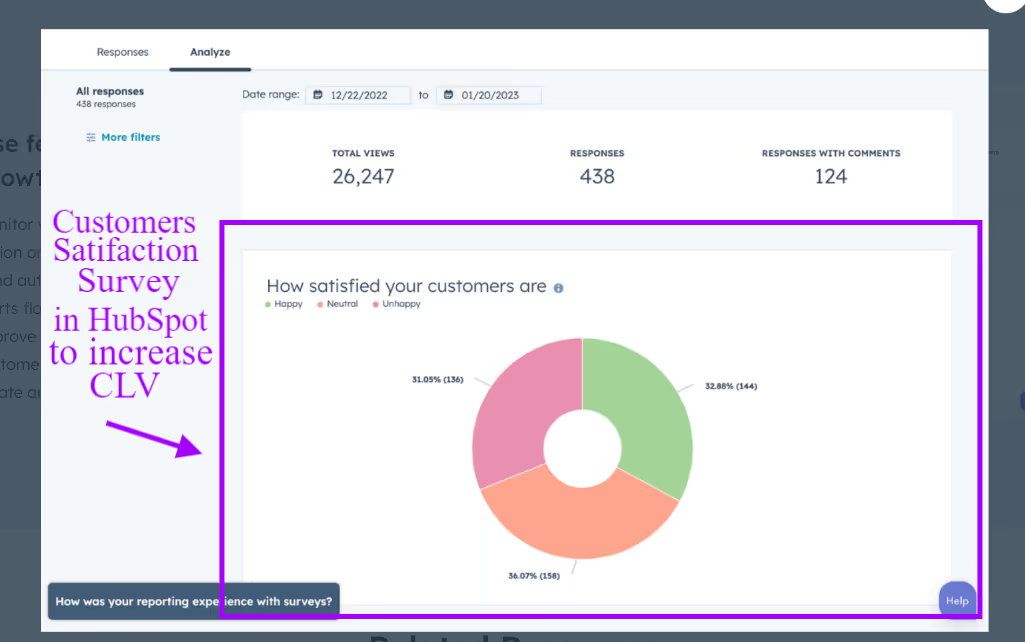
My favorite post-sale best practices:
- Automated Follow-Ups: Use workflows to automatically send follow-up emails or satisfaction surveys after a deal closes.
- Track Customer Interactions: HubSpot CRM enables you to easily track every interaction with a customer, from initial purchase to future engagements.
- Increase CLV: By staying in touch and providing value after the initial sale, you increase the likelihood of repeat business and long-term loyalty.
You’ve learned how to spot leads in your CRM, how to move them from stage to stage, and how to leverage HubSpot’s built-in features to build a winning sales process. Read on for some of my favorite tools to integrate with HubSpot and kick your sales funnel into high gear.
The Best Sales Tools for HubSpot
Clearly, HubSpot can pack a punch for even the most advanced sales teams, but it’s not the only tool available to you.
Yes, HubSpot gives you a fully-featured CRM packed with automation and AI-powered features, but the following are some of my favorite tools we use to enhance our sales process even further:
- Hublead: Hublead is the Chrome extension we built to integrate LinkedIn with HubSpot seamlessly. You can save (and deduplicate) contacts straight from LinkedIn, sync messages and InMails, and even report on LinkedIn activity right in HubSpot!
- Hublead Enrichment: We’ve added an Enrichment product to our suite of sales tools, allowing you to enrich any HubSpot contact list in seconds. Say goodbye to complicated Breeze AI credits and say hello to simple, fast, and reliable enrichment.
- Clutterless: Clutterless empowers ABM teams by delivering real-time business intelligence directly into HubSpot CRM, allowing sales and marketing teams to engage target accounts at the right moment with relevant, timely insights.
- Propensity ABM: Propensity ABM enables businesses to identify, engage, and convert high-intent target accounts by leveraging predictive data and automation.
Check out our guide to the top ABM tools for HubSpot for more tools you can use in your sales process! And if you’re prospecting heavily on LinkedIn and want to seamlessly import contacts, sync messages, and track your team’s performance, you can try Hublead for free here.
Frequently Asked Questions
How does HubSpot help with sales funnels?
HubSpot CRM enables you to easily create and customize sales funnels, providing your team with the insights needed to close deals more effectively.
What is a sales funnel?
A sales funnel maps the customer journey, from initial awareness to purchase, outlining the steps a prospect takes before becoming a customer.
Why do businesses need a sales funnel?
A sales funnel helps convert prospects into customers by guiding leads through each stage of the buying process.
What causes a sales funnel to fail?
Funnels fail due to poor audience understanding, weak CTAs, or neglecting lead nurturing.
Which businesses benefit from using a sales funnel?
Any business offering products or services benefits from a sales funnel to guide prospects and avoid missed sales.
